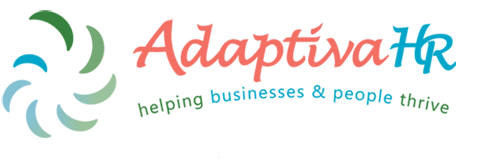Job Descriptions: The Foundation for HR Practices
Key Elements of a Good Job Descriptions
We have seen it all when it comes to job descriptions…ones that are eight pages long and ones that are zero pages! Strictly speaking, this is usually not a compliance issue (varies by state, some do require job descriptions for each position) but having a thorough job description lays the foundation for many other HR practices. These include recruiting, performance reviews, compensation reviews, and performance improvement processes among others.
Recruiting
The first step in recruiting should be to analyze the anticipated open position. If you are refilling due to employee attrition, review the role and make any changes that will benefit the business or team. If it is a new position, try to anticipate what will be needed to the best of your ability by researching other, similar job descriptions and getting input from as many people as possible who will interact with the new role. The clearer you are with articulating the purpose for the position, the specific duties, and what skills knowledge, and experience are needed, the more accurate your recruitment efforts.
A clear, thorough job description is an internal necessity but a boring recruitment tool!
The posting for the position should be engaging and used to attract candidates. Do not simply copy and paste or reshare the job description itself. Providing a link to it is helpful, but do create a job posting that speaks to a potential candidate similar to how marketing speaks to a potential customer. As Better Team explains, a job ad sells the job and summarizes the exciting components of the job in a way that will attract applicants.
We like to think of job postings as the menu items that diners will see as they sit at a table, whereas the job description shares what ingredients create each dish. All applicants should be able to view the job description during the application process, especially before an interview. Including a salary range in your job posting is best practice for an equitable hiring process and is required in some states, such as New York.
Performance Reviews
Whether you conduct an annual performance review or have a more frequent or ongoing process, be sure to incorporate reviewing the job description at least once a year. If duties change, update the job description when that happens. An accurate and comprehensive job description plays a key role in the performance review process. They guide reflecting on the employee’s work experience, metrics for performance, and how their work supports the organization. Using the job description as a part of the review process helps to ensure there is alignment between the employee’s work and the supervisor’s expectations.
Clarity and Protection
Job descriptions provide clarity and protection for both the employee and the employer. For instance, is the employee expected to perform their work onsite, remotely, or a hybrid of the two? Where is this documented? The job descriptions should have a section that outlines the working conditions for the role. Typically this details any physical requirements needed for the responsibilities of the job. It should also include the environment where the work will be performed. This removes any ambiguity about expectations. The job description should also specify if the position is exempt or non-exempt. This refers to whether the employee is eligible for overtime pay. (Misclassification is a common error that we find in our HR Assessments! You cannot simply decide a position is exempt to avoid paying overtime.) Many employers fail to indicate the exempt/non-exempt status for a position, which can cause significant issues in the future if an employee was due overtime and not paid.
Simplify!
Even though a job description should be comprehensive, it should not list every single task the employee may perform. For instance, if they are responsible for handling daily correspondence, avoid listing all the ways this may happen. Instead, summarize it:
Responsible for handling daily digital and print correspondence in a timely, courteous, and professional manner.
When we see a job description that is more than two pages, it is usually an indication that the position is either too broad or too unclear. Hyper-detailed job descriptions are also sometimes used as a “management” tool when an employee has performance issues. A supervisor may think that putting every single task, timelines, etc. in writing will provide structure to assist an employee (or documentation in preparation to fire them), but this is not effective nor, frankly, fair to the employee. If an employee is demonstrating issue(s) with performance, address them directly and use a performance improvement plan if more structure is needed.
You do not have to reinvent the wheel when it comes to job descriptions. There are plenty of resources online for specific positions as well as blank templates you can adapt to your needs. But, if this all makes your head spin or your business does not have the internal capacity to ensure there are accurate job descriptions for each position, reach out to find out how we can help.

